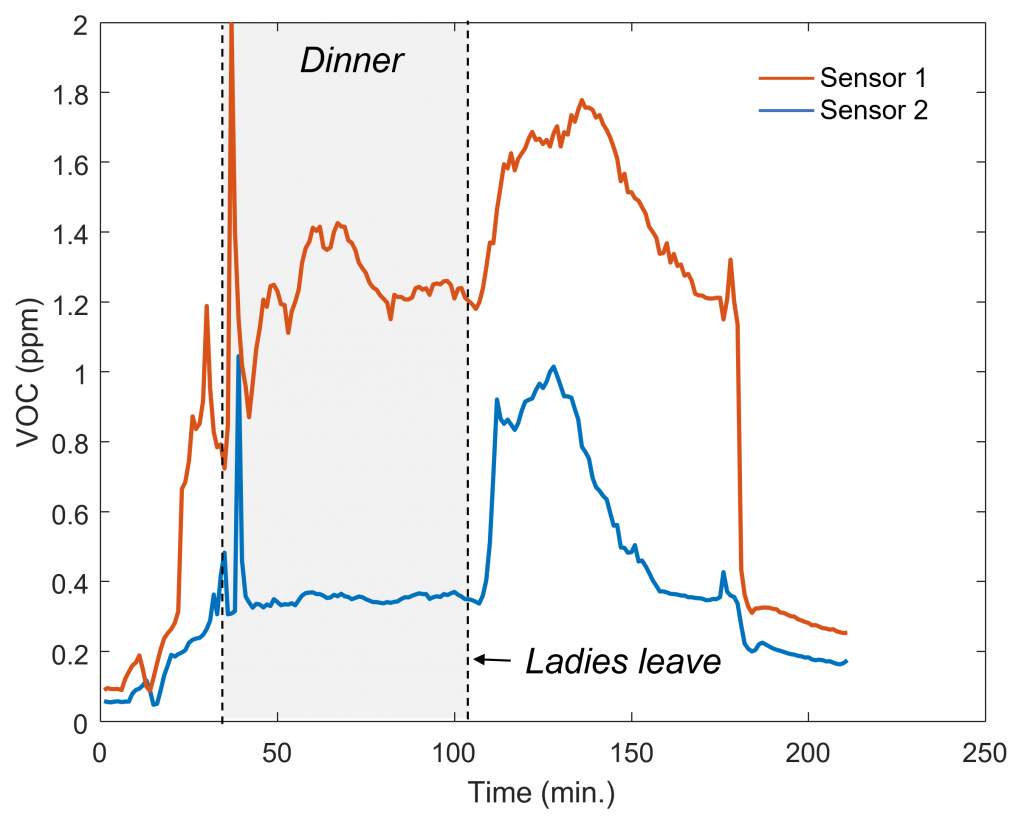The ICEF has a long history of seeking to understand farts through experimentation. In all cases, this has required the fart under investigation to actually leave the body. There are, however, a number of circumstances in which – for a variety of reasons – it’s best to keep a fart inside the body, if only temporarily. This action, generally referred to as ‘holding it in’, raises all kinds of interesting questions with respect to a balancing of social grace and health risk. The most common question by far when considering a ‘held’ fart is…”is it bad for you?”. So – let’s dive in and address some of the questions, concerns, and curiosities about holding in farts.
It is generally not recommended to hold in your farts for prolonged periods of time, as it can lead to discomfort and potential health risks. While it may be socially acceptable to hold in farts in certain situations, such as in public or in the workplace, it is important to find a private place to release them naturally to avoid any potential health issues. Holding in farts can cause bloating, abdominal pain, and even constipation. In some cases, it can also lead to the buildup of pressure in the rectum, which can cause a fart to be released involuntarily. It is best to let them out naturally to avoid discomfort and potential health risks.
For the purposes of this post we are going to assume that holding in a fart is not viable over the long term. There may be some evidence that extended fart holding can lead to a variety of drastic effects, as explained in this What If video (including an eventual exit via the mouth through an intermediary process of reabsorption, rectal bleeding as a result of diverticulitis, or the very rare over-expanded and ‘popped’ colon). While none of these outcomes is desirable – given the general distaste for public farting it seems having a set of strategies for release-management that balance personal comfort, social embarrassment, and the well-being of others to be of value.
This guide on holding in a fart published on WikiHow offers some great tips and strategies for holding in farts, farting quietly (for when the eventual release occurs), and minimizing flatulence. In keeping with the focus of the ICEF generally, and this post specifically, we’re going to skip over the first and third sections and focus on the second one. In our previous post we referred to the olfactory threshold of fart-smell (determined to be 0.1 ppm). This is a useful concept when managing the release of farts when trying not to get caught and works in tandem with the first strategy of the guide: fart slowly. This tactic assumes that you’re (a) unable to retreat to a secure location for farting (strategy 3) or that (b) simply covering up the noise will not be sufficient (strategy 2).
If one were able to control the release of a fart (in public) in such a way as to stay below the olfactory threshold (for smell detection) and the auditory threshold (for sound detection) then one need not hold in a fart…ever. There are some circumstances in which those thresholds are sufficiently high as to allow one to essentially get away with anything (such as farting on an airplane) but in most common circumstances where one finds oneself in the company of others (work, restaurants, public transportation, etc.) then sphincter control is one’s best defence (unless one suffers from Flatus Bowel Incontinence). Muscle relaxation, deep breathing, and optimized body position can all help in the endeavour. As mechanisms for prevention, taking anti-gas tablets can be effective, as is – apparently – doing squats to remove excess air from farts *.
Members of the ICEF recently gathered at an event where food was served and an opportunity to implement a novel masking strategy was presented. There were six (6) attendees including three (3) males, and three (3) females. Two air quality meters were placed in the room and the data is presented below:

We have written previously about the approximate 11 minute delay after consuming food before the onset of farting due to the gastrocolic reflex – where the context was an event attended by hundreds of people in a noisy space (somewhat akin to eating on an airplane). With only six people in attendance it seems there would be a natural inclination to hold farts, however, there was a brief VOC spike shortly after food was served (possibly linked to sulphites in the food and/or drink, possibly linked to some unmasked farts being released without regard to proper social convention). More interestingly, there was a large and sustained VOC spike in the moments following the departure of the three females. This suggests an obvious gender-bias with respect to holding in farts – though more investigation in this area may be required. A question of interest for future study would involve flipping the genders (or measuring the air quality of the adjacent room). This would not be the first time we have investigated a gender-difference with respect to farts.
In conclusion, we at the ICEF are in favour of any strategy that promotes fart release (in the obvious interest of generating research data). Health, safety, and personal comfort should be valued above social considerations around the shame and embarrassment of farting in public.
* while investigating the relationship between exercise and farts we came across several mentions of the Valsalva Maneuver. There may be implications here for a specific strategy for farting quickly if an opportunity with a short window were to arise – but we’ll hold comment for a future post.
